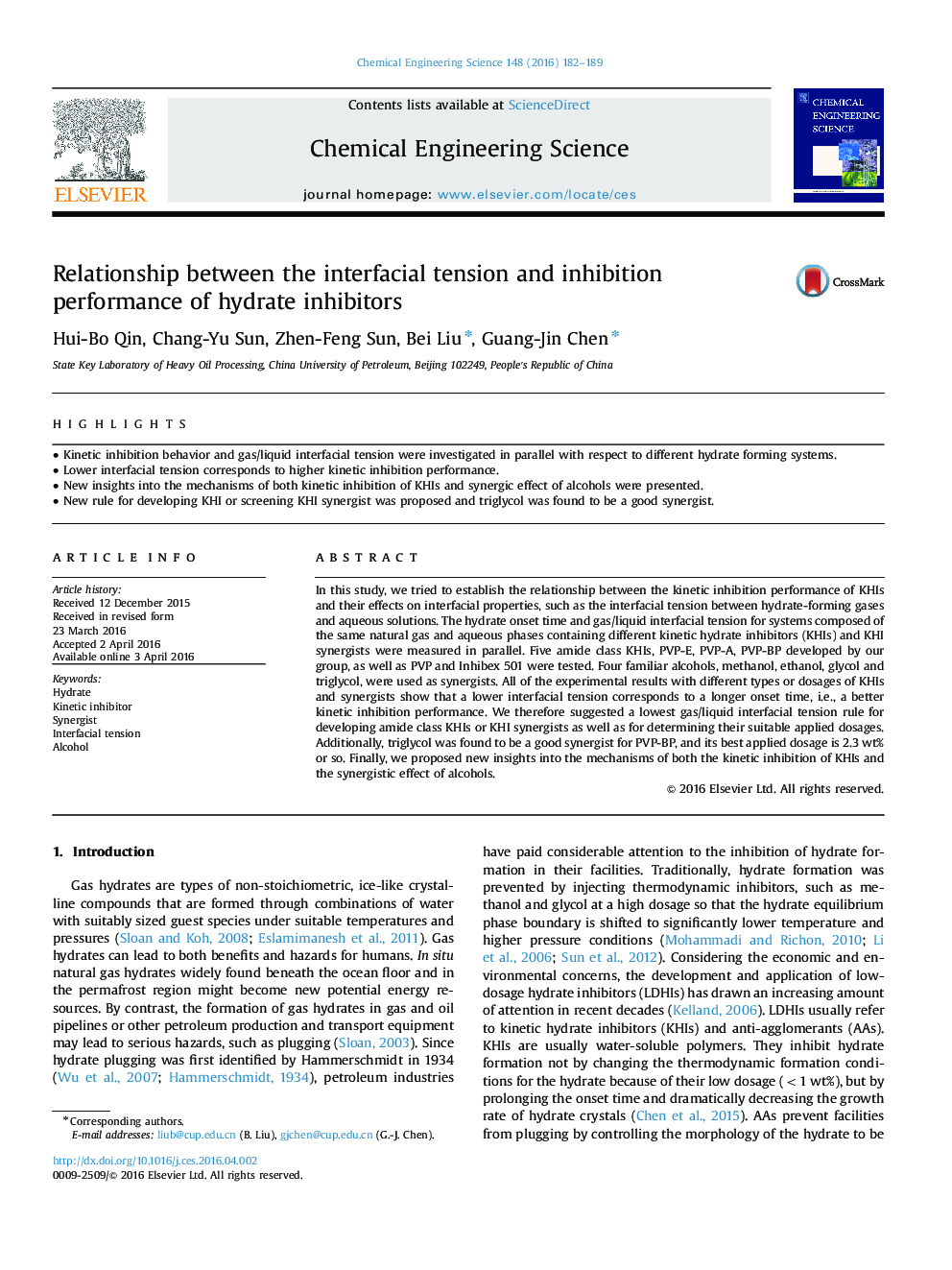| کد مقاله | کد نشریه | سال انتشار | مقاله انگلیسی | نسخه تمام متن |
|---|---|---|---|---|
| 154393 | 456837 | 2016 | 8 صفحه PDF | دانلود رایگان |
• Kinetic inhibition behavior and gas/liquid interfacial tension were investigated in parallel with respect to different hydrate forming systems.
• Lower interfacial tension corresponds to higher kinetic inhibition performance.
• New insights into the mechanisms of both kinetic inhibition of KHIs and synergic effect of alcohols were presented.
• New rule for developing KHI or screening KHI synergist was proposed and triglycol was found to be a good synergist.
In this study, we tried to establish the relationship between the kinetic inhibition performance of KHIs and their effects on interfacial properties, such as the interfacial tension between hydrate-forming gases and aqueous solutions. The hydrate onset time and gas/liquid interfacial tension for systems composed of the same natural gas and aqueous phases containing different kinetic hydrate inhibitors (KHIs) and KHI synergists were measured in parallel. Five amide class KHIs, PVP-E, PVP-A, PVP-BP developed by our group, as well as PVP and Inhibex 501 were tested. Four familiar alcohols, methanol, ethanol, glycol and triglycol, were used as synergists. All of the experimental results with different types or dosages of KHIs and synergists show that a lower interfacial tension corresponds to a longer onset time, i.e., a better kinetic inhibition performance. We therefore suggested a lowest gas/liquid interfacial tension rule for developing amide class KHIs or KHI synergists as well as for determining their suitable applied dosages. Additionally, triglycol was found to be a good synergist for PVP-BP, and its best applied dosage is 2.3 wt% or so. Finally, we proposed new insights into the mechanisms of both the kinetic inhibition of KHIs and the synergistic effect of alcohols.
Journal: Chemical Engineering Science - Volume 148, 12 July 2016, Pages 182–189
